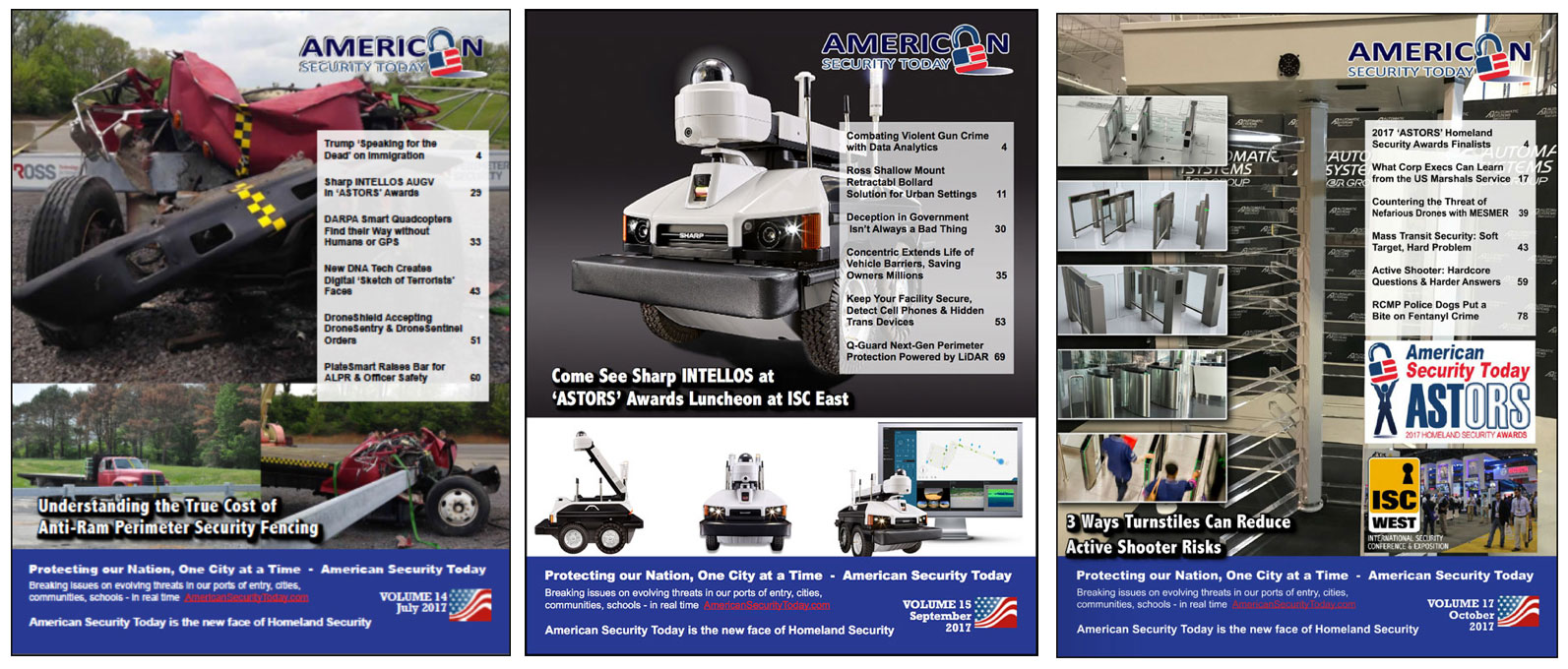
Guest Editorial By Joseph Pangaro, CPM
Ever since the events of September 11, 2001 and the seemingly endless horrors of school and workplace shootings we have been more vigilant than ever before.
We are aware that danger can erupt at any moment, in any location, we are worried about the security in our schools, workplaces and other public gathering areas.
We are always looking for trouble so we can react quickly and save ourselves, our kids and our friends.
So intent are we to avoid an active shooter or other violent event that our state, local, and federal agencies have come up with a host of suggestions for us on how to be safe, including the ubiquitous, “See Something, Say Something!”
That is great, but what exactly are we supposed to see so we can say something?
(New Yorkers keep New York safe. If you see something, say something. Courtesy of mtainfo and YouTube.)
Wherever I go to train people in safety and security practices I advise everyone in the class to look for suspicious people or suspicious packages and report them to the authorities so they can be checked out.
This is the focus of the entire vigilance concept.
Inevitably someone in the class will ask- “what does a suspicious person or a suspicious package look like…exactly?”
Let’s think about that for a minute. What makes someone or something suspicious?
Is it the clothes a person is wearing? Is it where you see them? Is it how they behave?
The answer can be yes to all of those possibilities and many more.
We should always look at a person’s behavior to give us clues as to what they are up to.

A person who shows up unannounced at your school or work place can be nothing more than someone who wants to talk to the boss or drop off a forgotten lunch, but before we open the door we should take a look at the person and see if there is anything that we should be concerned about.
Some of those things might be, a person trying to obscure their face with a hat or glasses, carrying something under their coat or appearing nervous.
They may not have the exact name of the person they want to see and them seem insistent about coming inside.
If we have someone like that at our door, we should keep them out there until someone can take a closer look.
That brings us to the suspicious package.
Is a backpack suspicious? Is a box or bag suspicious? Is a letter suspicious?
Once again, the answer is yes, all of these things can be suspicion items. A lot depends on where we find these packages.
Ok then, let’s see if we can clarify the situation a bit and add some focus.
Anything that is suspicious, a person or a package, has some things in common- the most obvious is that they are out of place.
A person that wears clothing not appropriate for the setting or the weather conditions might raise suspicions.
For example, a man wears a long coat on a warm day, this is out of place.
He might just be a person who gets chilly no matter the outside temperature, but most of us would find that odd.
Is he using the coat to hide something like a gun or a large knife or machete?
If the person is in your building and you don’t recognize them, they don’t make eye contact, they move too quickly, they are looking around as if they are trying to find someone, but they don’t respond when you ask them if they are lost or need help or they seem nervous.
These signs and actions would look strange and make us uncomfortable even if we couldn’t be specific as to why.
If you are on a bus or a train, in the park or the movie theatre, a school or office building and you see an unattended brief case or back pack you have to ask- did someone lose their bag, forget it or is it something else, maybe an explosive.
Do you see wires sticking out of the backpack or bag, does it have a funny smell or is it smoking? All of these are very troubling signs of a potentially dangerous object.
Recently on a train in London someone placed a 5-gallon bucket with a black plastic bag in it on the train and walked away.
The bucket was strange looking, and people were staring at it wondering why it was on the train, then it began to smoke, and everyone ran.
It was a homemade bomb, but luckily it didn’t explode.
(A homemade bomb detonated on a packed London subway train during rush hour this morning. More than 20 people were injured. Courtesy of CBC News and YouTube.)
Doesn’t this kind of thing sound suspicious? Of course, and one main factor was that it was out place.
What was an unattended bucket doing on a commuter train?
There was also an incident in the subways of New York recently where a man had a bomb in a backpack, and it exploded while he was carrying it; it seems he intended to leave it somewhere to explode and hurt other people, but it went off early.
If he had managed to leave the backpack on the platform or on a train would you have thought that a suspicious package?
So even though we can’t always describe exactly what “Suspicious” is, we can consider the circumstances, location and behaviors of people and packages to see if they seem out of place or make us uncomfortable enough to consider why that is.
This brings us back to the saying – “See something say something”, if you see something or someone that seems out of place or makes you uncomfortable that IS what suspicious is.
Call the police and let someone know. You might be wrong, but if you are right you could save your life or the lives of other innocent people.
(Homeland security begins with hometown security. This PSA seeks to empower everyday citizens to protect their neighbors and the communities they call home by recognizing and reporting suspicious activity. Across the country, we all play a role in keeping each other safe. Courtesy of U.S. Department of Homeland Security and YouTube.)
Here are a few examples of what a suspicious package might look like: First we have a standard backpack.
At first glance there is nothing that seems out of the ordinary, but upon closer inspection we see wires sticking out of the backpack; that is suspicious and should be considered potentially dangerous- get away from it and try to keep others away and alert the police.
 Another example is a package that is covered in duct tape, string or other medium to prevent people from opening it.
Another example is a package that is covered in duct tape, string or other medium to prevent people from opening it.
If you see something like this, you have to ask- “why would someone wrap a package in duct tape?”
We cannot live in a state of paranoia, but we must keep our eyes open and pay attention to what and who is around us.
We should be “Aware and prepare”.
Suspicious is anything that is out of place and makes us uncomfortable.
So, if you See Something, Say Something – Everyone is a part of the security team!
True Security Design Takes Gold in the 2018 ‘ASTORS’ Homeland Security Awards Program
True Security Design
-
Best Risk Analysis Methodology
-
Threat Vulnerability and Risk Assessment for K12 Schools
The Annual ‘ASTORS’ Awards Program is specifically designed to honor distinguished government and vendor solutions that deliver enhanced value, benefit and intelligence to end users in a variety of government, homeland security and public safety vertical markets.

The 2018 ‘ASTORS’ Awards Program drew an overwhelming response from industry leaders with a record high number of corporate and government nominations received, as well as record breaking ‘ASTORS’ Presentation Luncheon Attendees, with top firms trying to register for the exclusive high – end luncheon and networking opportunity – right up to the event kickoff on Wednesday afternoon, at the ISC East registration!
Over 130 distinguished guests representing National, State and Local Governments, and Industry Leading Corporate Firms, gathered from across North America, Europe and the Middle East to be honored among their peers in their respective fields which included:
- The Department of Homeland Security
- The Federal Protective Service (FPS)
- Argonne National Laboratory
- The Department of Homeland Security
- The Department of Justice
- The Security Exchange Commission Office of Personnel Management
- U.S. Customs and Border Protection
- Viasat, Hanwha Techwin, Lenel, Konica Minolta Business Solutions, Verint, Canon U.S.A., BriefCam, Pivot3, Milestone Systems, Allied Universal, Ameristar Perimeter Security and More!
The Annual ‘ASTORS’ Awards is the preeminent U.S. Homeland Security Awards Program highlighting the most cutting-edge and forward-thinking security solutions coming onto the market today, to ensure our readers have the information they need to stay ahead of the competition, and keep our Nation safe – one facility, street, and city at a time.
The 2018 ‘ASTORS’ Homeland Security Awards Program was Proudly Sponsored by ATI Systems, Attivo Networks, Automatic Systems, Desktop Alert, and Royal Holdings Technologies.
Nominations are now being accepted for the 2019 ‘ASTORS’ Homeland SecurityAwards at https://americansecuritytoday.com/ast-awards/.
Comprehensive List of Categories Include:
| Access Control/ Identification | Personal/Protective Equipment | Law Enforcement Counter Terrorism |
| Perimeter Barrier/ Deterrent System | Interagency Interdiction Operation | Cloud Computing/Storage Solution |
| Facial/IRIS Recognition | Body Worn Video Product | Cyber Security |
| Video Surveillance/VMS | Mobile Technology | Anti-Malware |
| Audio Analytics | Disaster Preparedness | ID Management |
| Thermal/Infrared Camera | Mass Notification System | Fire & Safety |
| Metal/Weapon Detection | Rescue Operations | Critical Infrastructure |
| License Plate Recognition | Detection Products | And Many Others! |
Don’t see a Direct Hit for your Product, Agency or Organization?
Submit your category recommendation for consideration to Michael Madsen, AST Publisher at: mmadsen@americansecuritytoday.com.
2018 Champions Edition
 See the 2018 ‘ASTORS’ Champions Edition – ‘Best Products of 2018 ‘ Year in Review’ for in-depth coverage of the outstanding products and services of firms receiving American Security Today’s 2018‘ASTORS’ Homeland Security Awards.’
See the 2018 ‘ASTORS’ Champions Edition – ‘Best Products of 2018 ‘ Year in Review’ for in-depth coverage of the outstanding products and services of firms receiving American Security Today’s 2018‘ASTORS’ Homeland Security Awards.’
Enter Early to Maximize Media Coverage of your Products and Services at Kickoff, and Get the Recognition Your Organization Deserves!
And be sure to Register Early for the 2019 ‘ASTORS’ Awards Presentation Luncheon at ISC East 2019 to ensure your place at this limited- space event!

Why the 2019 ‘ASTORS’ Homeland Security Awards Program?
American Security Today’s comprehensive Annual Homeland Security Awards Program is organized to recognize the most distinguished vendors of physical, IT, port security, law enforcement, and first responders, in acknowledgment of their outstanding efforts to ‘Keep our Nation Secure, One City at a Time.’
Why American Security Today?
American Security Today is uniquely focused on the broader Homeland Security & Public Safety marketplace with over 70,000 readers at the Federal, State and local levels of government as well as firms allied to government.
The old traditional security marketplace has been covered by a host of security publications that have changed little over many years.
American Security Today brings forward a fresh compelling look and read with our customized digital publications that provides our readers with solutions to their challenges.
Our Editorial staff provides a full plate of topics for our AST monthly digital editions, AST Website and AST Daily News Alerts.
The editorial calendar and AST’s high drawing website features 23 different Technology and Marketing Sectors such as Access Control, Perimeter Protection, Video Surveillance/Analytics, Airport Security, Border Security, CBRNE Detection, Border Security, Ports, Cybersecurity, Networking Security, Encryption, Law Enforcement, First Responders, Campus Security, Security Services, Corporate Facilities and Emergency Response among others.
These sectors are part of the new integration, where these major applications communicate with one another in a variety of solutions to protect our cities and critical infrastructure.
AST has Expanded readership into vital Critical Infrastructure audiences such as Protection of Nuclear Facilities, Water Plants & Dams, Bridges & Tunnels, and other Potential targets of terrorism.
Other areas of concern include Transportation Hubs, Public Assemblies, Government Facilities, Sporting & Concert Stadiums, our Nation’s Schools & Universities, and Commercial Business Destinations – enticing targets for extremist or lone wolf attacks due to the large number of persons and resources clustered together.
A leading school security consulting and training firm, True Security Design is at the forefront of delivering live action role-play training simulations and classroom-based instruction to better prepare school staff in an emergency.
 The company’s training curriculum and Threat Vulnerability and Risk Assessments (TVRA’s) are trusted by Fortune 500 companies, government agencies and municipalities, utilities, healthcare facilities, school districts and leading universities to mitigate risk while protecting people and properties.
The company’s training curriculum and Threat Vulnerability and Risk Assessments (TVRA’s) are trusted by Fortune 500 companies, government agencies and municipalities, utilities, healthcare facilities, school districts and leading universities to mitigate risk while protecting people and properties.
For further information on Threat Vulnerability and Risk Assessments, visit the company website at www.truesecuritydesign.com or call 631-675-2285.
Learn More…
The DHS website lists anomalies that should raise red flags about a package, among them the following characteristics:
- Rigid or bulky
- Lopsided or uneven
- Wrapped in string
- Badly written or misspelled labels
- Generic or incorrect titles
- Excessive postage
- No postage
- Foreign writing, postage, or return address
- Missing, nonsensical, or unknown return address
- Leaks, stains, powders, or protruding materials
- Ticking, vibration or other sound























